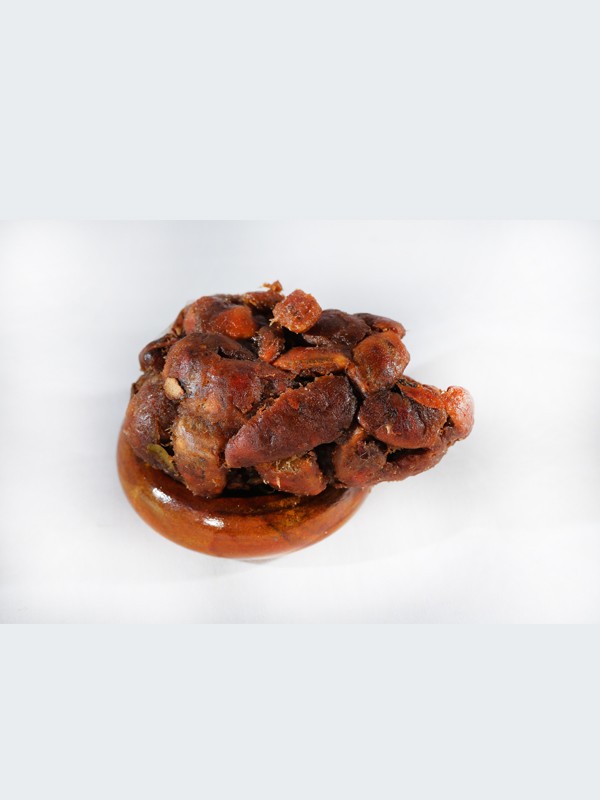Tamarind
Tamarind (Tamarindus indica) is a leguminous tree in the family Fabaceae indigenous to tropical Africa. The genus Tamarindus is a monotypic taxon, having only a single species.
The tamarind tree produces edible, pod-like fruit which is used extensively in cuisines around the world. Other uses include traditional medicine and metal polish. The wood can be used in carpentry. Because of the tamarind’s many uses, cultivation has spread around the world in tropical and subtropical zones.
The tamarind is best described as sweet and sour in taste, and is high in acid, sugar, B vitamins and calcium. Tamarind is a common ingredient all over Sri Lanka, India and South-East Asia in curries, “rasam”, chutneys, as well as in vegetable and lentil recipes. The pulp is also favored in “hot and sour” soups as well in marinades. The juice made of tamarind pulp with addition of dates sugar, honey, cardamom, cloves, and coriander seeds are a refreshing drink marketed in different parts of the world. Its pulp is also used in confectionaries as solidifying agent.
Sri Lanka began to export tamarind products, mainly in the form of pulp, in 1991.
Culinary Uses
The fruit pulp is edible. The hard green pulp of a young fruit is considered by many to be too sour, but is often used as a component of savory dishes, as a pickling agent or as a means of making certain poisonous yams in Ghana safe for human consumption.
The ripened fruit is considered the more palatable, as it becomes sweeter and less sour (acidic) as it matures. It is used in desserts, as a jam, blended into juices, or sweetened drinks, sorbets, ice creams and other snacks. In Western cuisine, it is found in Worcestershire sauce.
Health Benefits
- Tamarind juice is a mild laxative.
- Tamarind is used to treat bile disorders
- Tamarind lowers cholesterol
- Tamarind promotes a healthy heart
- The pulp, leaves and flowers, in various combinations, are applied on painful and swollen joints.
- Tamarind is use as a gargle for sore throats, and as a drink to bring relief from sunstroke.
- The heated juice is used to cure conjunctivitis. Eye drops made from tamarind seeds may be a treatment for dry eye syndrome.
- Tamarind seed polysaccharide is adhesive, enabling it to stick to the surface of the eye longer than other eye preparations.
- Tamarind is used as a diuretic remedy for bilious disorders, jaundice and catarrh.
- Tamarind is a good source of antioxidants that fight against cancer.
- Tamarind reduces fevers and provides protection against colds. Make an infusion by taking one ounce of pulp, pour one quart of boiling water over this and allow to steep for one hour. Strain and drink tepid with little honey to sweeten. This will bring down temperature by several degrees.
- Tamarind helps the body digest food
- Tamarind applied to the skin to heal inflammation
- The red outer covering of the seed is an effective remedy against diarrhea and dysentery.
- Juice extracted from the flowers is given internally for bleeding piles.

